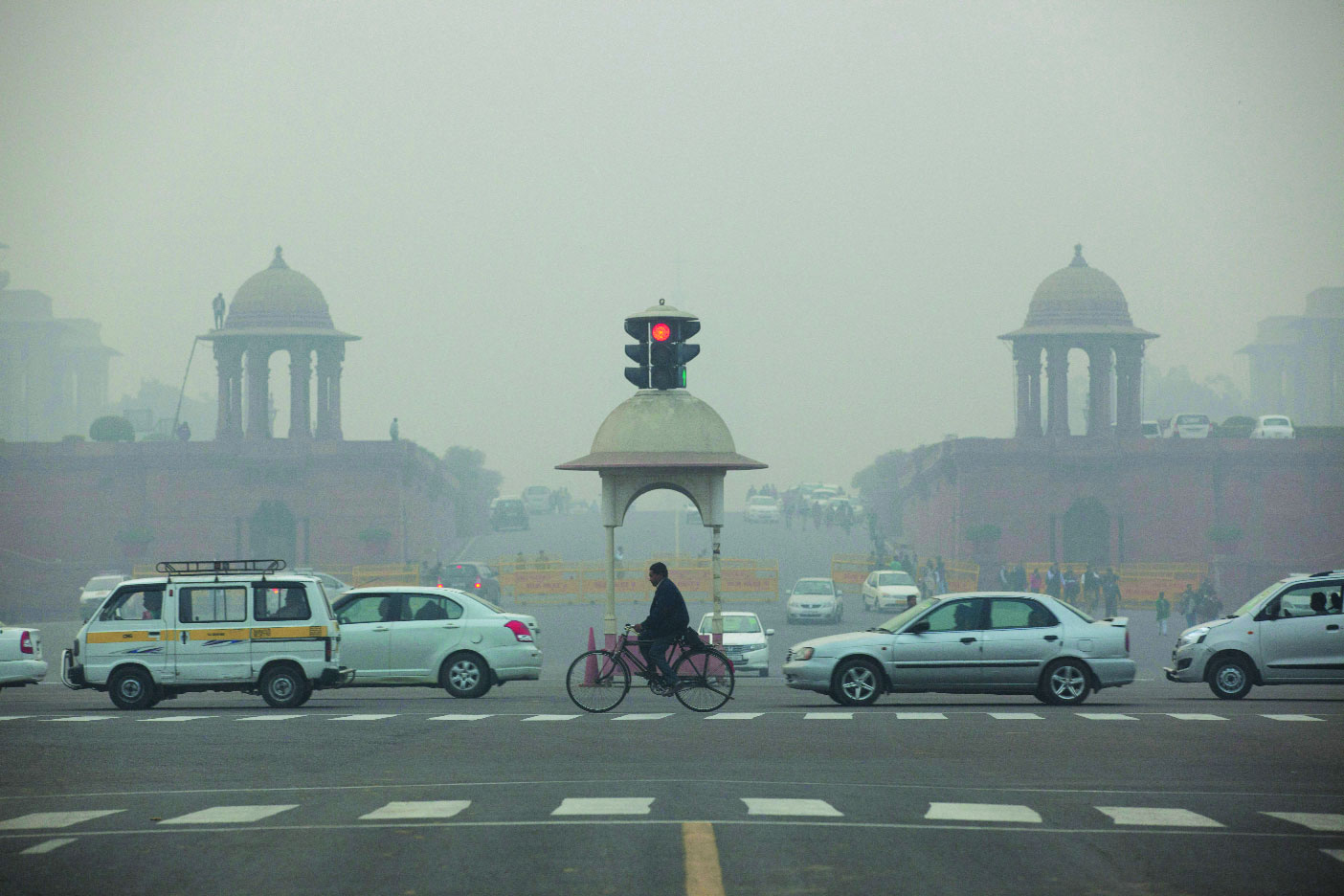The quality of air in the national Capital has deteriorated once again with pollution level going up after witnessing a few days of ‘good’ air quality. Officials attributed the rise in pollution level to certain local factors mainly vehicular pollution.
The Air Quality Index (AQI) was recorded at 159, over four times more than last Tuesday, according to the Centre’s System of Air Quality and Weather Forecasting and Research Institute (SAFAR). Monsoon rain had improved the air quality in the last two months.
An AQI in the range of 0-50 is considered ‘good’, 51-100 ‘satisfactory’, 101-200 ‘moderate’, 201-300 ‘poor’, 301-400 ‘very poor’ and 401-500 ‘severe’. Since July, the air quality remained ‘satisfactory’ and even witnessed three days of ‘good’ category.
A Central Pollution Control Board (CPCB) official said the rise in pollution level is due to local factors especially the vehicular pollution. “After the monsoon subsided, the local reasons resulted in increase of pollution in the city,” said the official.
According to the data from the CPCB, the PM10 level (presence of particles with diameter less than 10 mm) was recorded as ‘moderate’ at 171 in Delhi-NCR and 167 in Delhi. The PM2.5 level (presence of particles with diameter less than 2.5 mm) was 81 in Delhi-NCR and 85 in Delhi.
The Supreme Court appointed body Environment Pollution Control Authority (EPCA) has called for a meeting next week to explore possible solutions to control local factors responsible for the rise in pollution.
According to the SAFAR, the pollution level is expected to further increase in the next two days, specially the PM10 level.
Earlier, incessant rain in the Capital had washed away dangerous pollutants from the air, leading to most clean air quality of this year on Tuesday. It was the third time in the year that the AQI was registered as “good”. According to the SAFAR, the AQI was recorded at 38 on September 22 of this year and that was the lowest in this year.
Last Saturday (September 22), the AQI was 48, while on July 28 it was 43. The PM10 level was recorded as “good” at 37 in NCR and 35 in Delhi.
The PM 2.5 level was 19 in NCR and 18 in Delhi, according to the CPCB data.
According to experts, with paddy harvesting session peaking in the neighbouring Punjab, Haryana and Western Uttar Pradesh, the pollution level in the city is like to register further spike. There are reports that farmers have already started to burn paddy husk also known as Paraali after separating paddy from the husk.
Taking cognisance of the impending increase of the pollutants in the air, Delhi Environment minister Imran Hussain wrote to his counterparts in the neighbouring states and held several meetings to mitigate the pollution level. Officials said they are in touch with their counterparts and also several steps have been initiated to keep the poolution level under check.
























